TABLE OF CONTENT
Nestled in the northernmost reaches of Vietnam, the Ha Giang Loop is an adventurer’s dream, promising a winding journey through dramatic landscapes, towering peaks, and vibrant hill tribe cultures. This thrilling circuit, often called the “Northern Loop,” is a haven for those seeking an off-the-beaten-path experience in this enchanting Southeast Asian country. In this blog post, Asia Encounter help you embark on a virtual ride through Ha Giang, uncovering the awe-inspiring beauty, cultural richness, and sheer sense of adventure that awaits every traveler daring enough to explore this hidden gem.
How to get to Ha Giang?
Getting to Ha Giang, the gateway to the mesmerizing landscapes of the Ha Giang Loop, offers travelers various transportation options. One common route is to start from Hanoi, the capital city of Vietnam. If you prefer air travel, the nearest airport is Noi Bai International Airport in Hanoi. Upon arrival, you can hire a taxi or take a local bus to cover the remaining distance to Ha Giang.
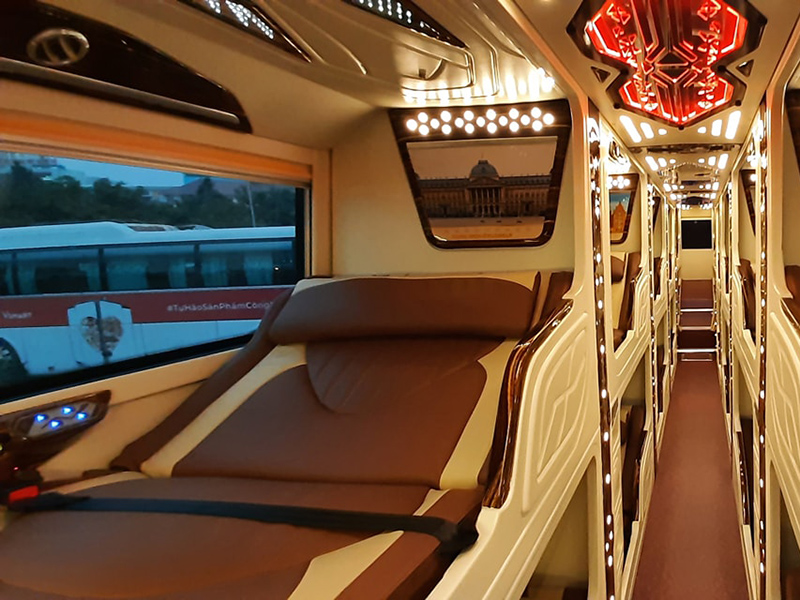 |
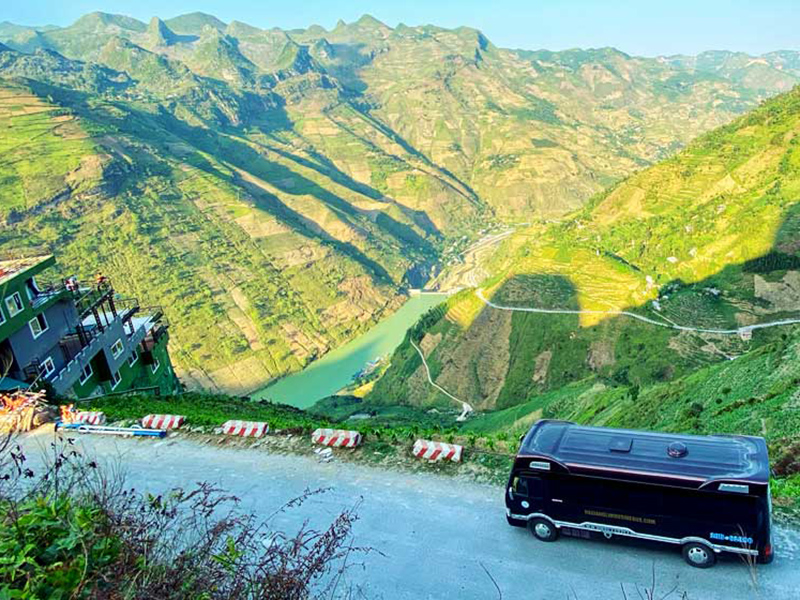 |
From Hanoi, visitors can opt for a scenic bus ride to Ha Giang, with several bus companies providing both daytime and overnight services. The journey takes approximately 7-9 hours, and buses typically depart from Hanoi’s My Dinh Bus Station. Another popular choice is renting a motorbike in Hanoi and embarking on a thrilling road trip to Ha Giang, allowing for greater flexibility and the opportunity to explore the picturesque landscapes along the way. For those seeking a more relaxed travel experience, private car services with drivers are available, offering a comfortable journey from Hanoi to Ha Giang.
Additionally, travelers from nearby destinations, such as Sapa, Cao Bang, Lao Cai, or Tuyen Quang, can find buses or private transportation options to reach Ha Giang. Regardless of the chosen mode of transportation, the journey to Ha Giang promises a transition from bustling urban scenes to the serene beauty of Northern Vietnam’s mountainous landscapes.
How long does it take to complete the Ha Giang Loop?
The duration to complete the Ha Giang Loop can vary depending on several factors, including the chosen mode of transportation, stops along the way, weather conditions, and individual preferences. On average, motorbike riders typically take 3 to 4 days to complete the loop, but some travelers may choose to extend or shorten their journey based on their preferences. Here’s a general breakdown:
3-Day Itinerary:
-
- Day 1: Ha Giang to Dong Van (via Yen Minh)
- Day 2: Dong Van to Meo Vac and Ma Pi Leng Pass
- Day 3: Meo Vac to Ha Giang (via Quan Ba and Tam Son)
4-Day Itinerary:
-
- Day 1: Ha Giang to Quan Ba (via Quyet Tien Market)
- Day 2: Quan Ba to Yen Minh and Dong Van
- Day 3: Dong Van to Meo Vac and Ma Pi Leng Pass
- Day 4: Meo Vac to Ha Giang (via Du Gia)
How to ride the Ha Giang loop?
Embarking on the Ha Giang Loop adventure is an exhilarating experience, offering riders a chance to navigate the winding roads, encounter diverse cultures, and soak in the breathtaking landscapes of Northern Vietnam. Here’s a guide on how to ride the Ha Giang Loop with various options to suit different preferences:
Riding the Ha Giang loop with motorbike option
Renting a motorbike in Ha Giang City is popular. Local rental shops offer a variety of bikes, from scooters to manual dirt bikes, catering to different riding preferences and skill levels. Rental prices vary based on the type of motorbike and the rental duration. Daily rates typically range from 150,000 VND to 400,000 VND, with discounts for longer rentals.
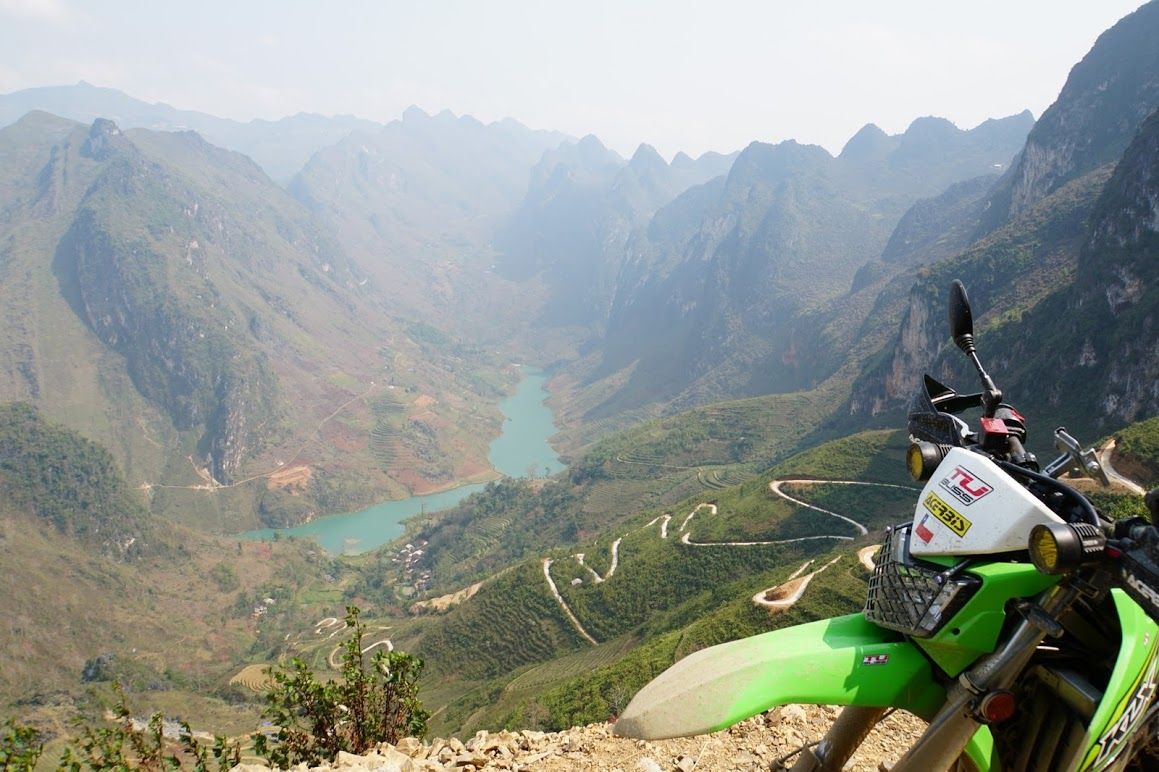
If you’re less confident about riding independently or prefer a guided experience, consider joining a guided motorbike tour. Local operators provide experienced guides, ensuring a safe and informative journey. Guided tours often include a motorbike, helmet, accommodation, and sometimes meals, offering a hassle-free way to enjoy the loop.
For those who prefer not to ride, hiring a motorbike taxi or a local driver is an option. This allows travelers to relax and enjoy the stunning landscapes without the responsibility of riding. Negotiate prices in advance and ensure that the driver is familiar with the Ha Giang Loop routes.
Riding the Ha Giang Loop with car option
Renting a car with a local driver is a comfortable alternative, especially for those who may not be comfortable on a motorbike or prefer four-wheeled transportation. Some tour operators offer car rental services with drivers for specific Ha Giang Loop itineraries.
Cycling the Ha Giang loop
Adventurous cyclists can explore the Ha Giang Loop on bicycles. While the terrain can be challenging, it provides a unique and eco-friendly way to experience the loop at a slower pace. Bicycles can be rented in Ha Giang City, and some tour operators offer guided cycling tours.
Accommodation for doing the Ha Giang loop
Accommodations along the Ha Giang Loop cater to the diverse preferences of travelers, ranging from budget-friendly options to more comfortable stays. The availability of accommodations can vary in each town, and planning and booking in advance during peak travel seasons is advisable. Here’s a breakdown of the types of accommodations you can find along the Ha Giang Loop:
1. Homestays/ Guesthouses
 |
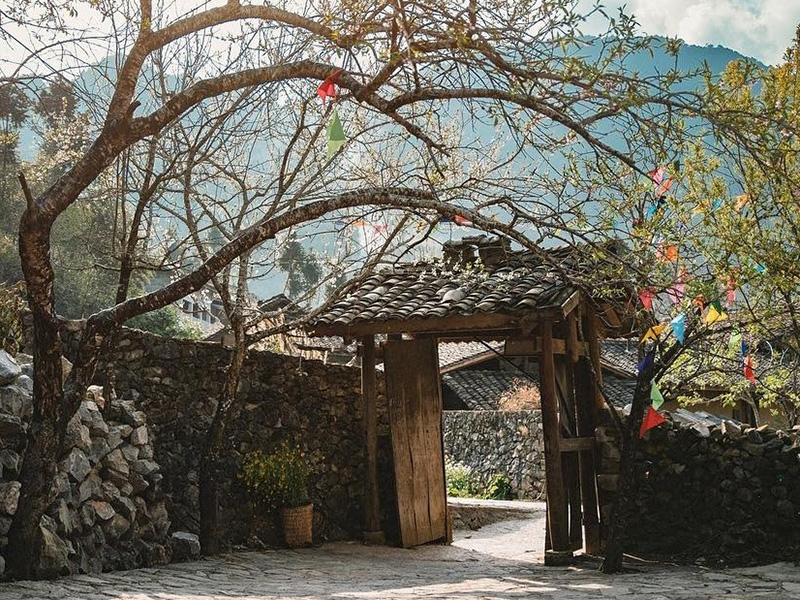 |
Homestays are a prevalent and immersive choice for those wanting to connect with the local culture. Many ethnic minority villages along the loop offer homestays, providing visitors with a chance to stay in traditional houses and experience daily life firsthand. Host families often warmly welcome guests, offering home-cooked meals and sharing stories about their customs and traditions.
Budget: from 300,000 vnd – 1,000,000 vnd/ night
2. Hotels
In larger towns like Ha Giang city and Dong Van, you can find hotels that offer more amenities and services. These establishments provide a comfortable retreat after a day of exploring, with options ranging from mid-range to more upscale accommodations. Hotels may include private bathrooms, air conditioning, and Wi-Fi.
Budget: Mid-range hotels may cost between 400,000 VND to 1,200,000 VND per night.
4. Hostels
For budget-conscious solo travelers or those seeking a more social environment, hostels provide shared dormitory-style accommodation. Hostels often organize group activities and provide a lively atmosphere for meeting fellow travelers. Hostels typically offer communal spaces, shared bathrooms, and the chance to connect with like-minded adventurers.
Budget: Hostel dormitory beds can range from 150,000 VND to 350,000 VND per night.
5. Resorts/ Eco-lodges
In certain areas, you may find resorts/ eco-lodges that offer a more luxurious stay. These accommodations often feature well-appointed rooms, amenities like swimming pools, and scenic surroundings. Resorts provide an opportunity to unwind and enjoy the serene beauty of the Ha Giang landscapes in comfort.
Budget: Prices vary widely, ranging from 1,000,000 VND to 3,000,000 VND or more per night.
>> Vietnam Travel Guide: What To Know Before Your Journey!
What to expect for the Ha Giang loop tour?
Admire the majestic Dong Van Karst plateau
 |
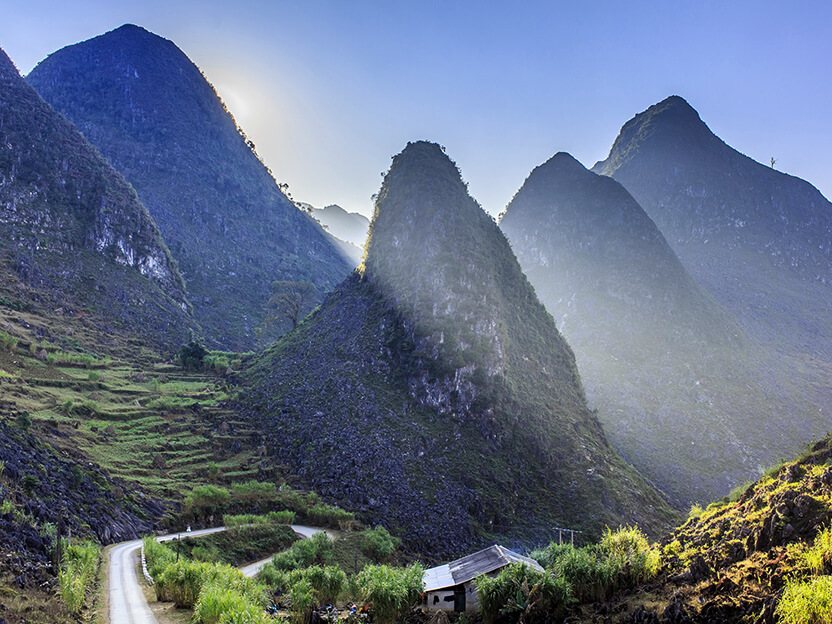 |
The Ha Giang Loop is renowned for its breathtaking landscapes, and the Dong Van Karst Plateau is a highlight that leaves every traveler in awe. As you wind your way through the labyrinthine roads, sheer limestone peaks and deep valleys unfold before your eyes. Villages perched on the mountainsides and the traditional Hmong architecture provide glimpses into the unique cultures that thrive in this rugged terrain.
Meet the Hill Tribes in Ha Giang

One of the most rewarding aspects of the Ha Giang Loop is the opportunity to interact with the diverse hill tribe communities that call this region home. From the Hmong and Tay to the Dao and Lo Lo, each group has its own distinct customs, attire, and way of life. The warmth of the locals and the chance to share moments with them add depth and authenticity to the journey.
The Quan Ba Heaven’s Gate and Twin Mountains

The Quan Ba Heaven’s Gate, with its panoramic views of the surrounding landscapes, and the iconic Twin Mountains, known for resembling a woman’s breasts, are must-visit landmarks along the route. These natural wonders add a touch of mystique to the journey, inviting riders to pause, absorb the scenery, and capture the essence of Ha Giang’s beauty.
Lung Cu Flag Tower and Ma Pi Leng Pass
 |
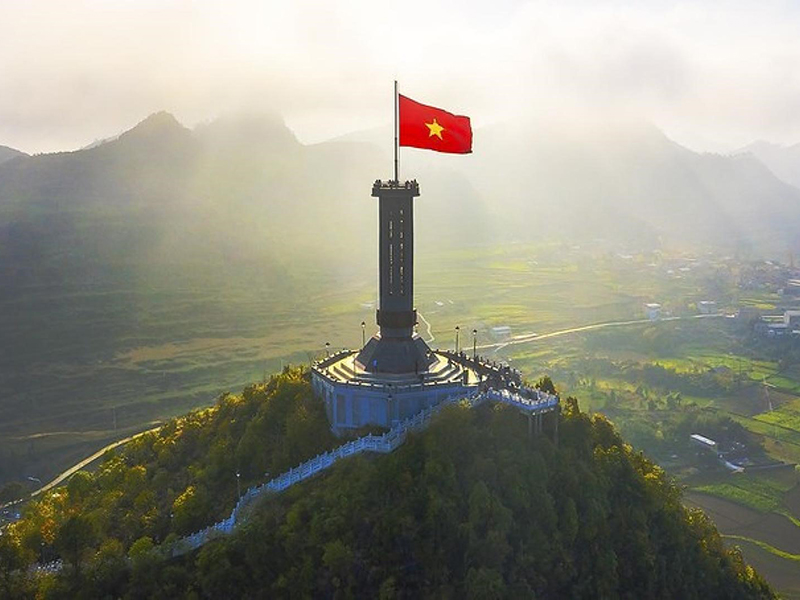 |
Adventure-seekers will find their hearts racing as they tackle the legendary Ma Pi Leng Pass, considered one of the most challenging and rewarding stretches of the Ha Giang loop. The Lung Cu Flag Tower, standing proudly at the northernmost point of Vietnam, marks a symbolic achievement, providing a sense of accomplishment and the perfect backdrop for photographs.
Homestays and Local Cuisine
Embrace the hospitality of the locals by opting for homestays along the Ha Giang Loop. These experiences not only offer a comfortable respite but also allow you to savor authentic local cuisine. Every meal celebrates Northern Vietnamese culinary traditions, from steaming bowls of pho to the aromatic flavors of regional specialties.
Sunset at Nho Que River
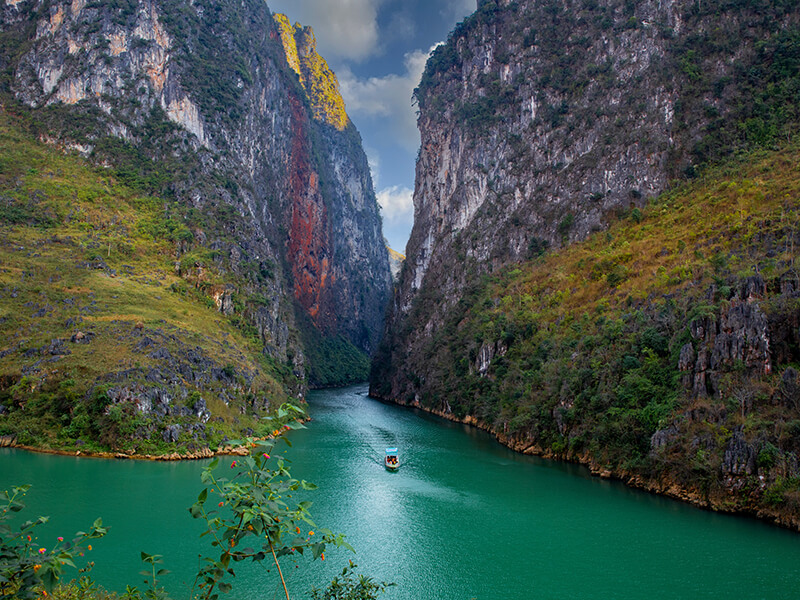
As the day winds down, find yourself at the Nho Que River, where the setting sun casts a golden hue over the serene waters, creating a tranquil moment of reflection. The Ha Giang Loop, with its challenging roads and awe-inspiring vistas, becomes a journey etched into memory, leaving every traveler with a profound appreciation for the untamed beauty and cultural richness of this corner of Vietnam.
—–
The Ha Giang Loop is more than just an adventure; it’s a passage through the soul-stirring landscapes and diverse cultures that define Northern Vietnam. From the dizzying heights of mountain passes to the warmth of hill tribe communities, every twist and turn reveals a new facet of this enchanting region. For those seeking an unforgettable voyage off the tourist trail, Ha Giang definitely beckons with its winding roads, cultural tapestry, and the promise of discovery at every curve.
Embark on a 12-day unlock Vietnam hidden wonders adventure with Asia Encounter, and let the mesmerizing landscapes of the Ha Giang loop unfold before you, revealing Vietnam’s hidden wonders. As you traverse through the scenic terrain of Ha Giang, nestled in the northern part of the country, you’ll witness breathtaking views of terraced rice fields, limestone peaks, and traditional villages that seem frozen in time.
Asia Encounter’s expertly crafted tour ensures an immersive experience, allowing you to connect with the local culture and explore the lesser-known gems of Vietnam. From the vibrant markets to the warm hospitality of the ethnic communities, this journey promises to unveil the authentic beauty of Ha Giang, making it an unforgettable and enriching exploration of Vietnam’s captivating landscapes and hidden treasures.



